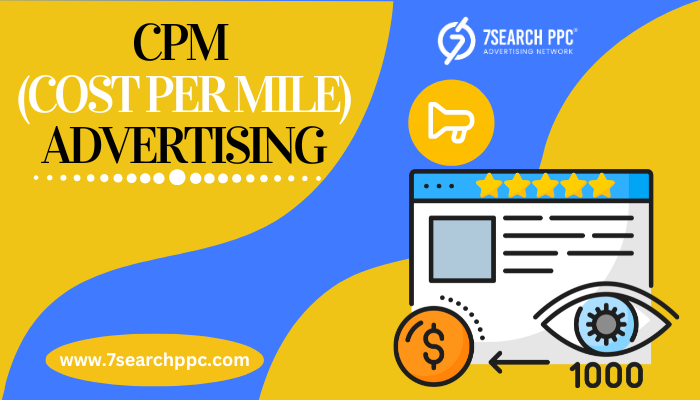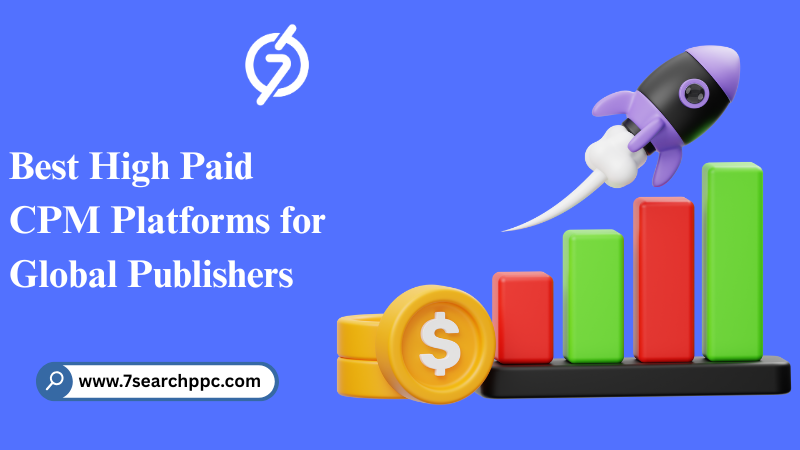Maximizing Your ROI with Effective CPM Advertising Strategies

Strong 8k brings an ultra-HD IPTV experience to your living room and your pocket.
In today's competitive digital landscape, businesses are constantly searching for ways to maximize their return on investment (ROI) in advertising. One of the most prevalent and effective methods is CPM advertising (Cost Per Mille), which allows advertisers to pay for impressions rather than clicks. This model offers unique advantages for brand awareness and visibility. This blog will delve into CPM advertising, exploring effective strategies to optimize ROI and ensure that your advertising budget is well spent.
✍️ Choosing between CPC, CPA, and CPM models can be confusing. We’ve outlined scenarios where each model works best, showing why CPM remains a top choice for campaigns focused on reach and awareness rather than conversions.
Understanding CPM Advertising
What Is CPM Advertising?
CPM advertising refers to the cost an advertiser pays for one thousand impressions of their advertisement. This model is primarily used in online advertising and is particularly effective for businesses focused on increasing brand awareness. Unlike CPC (Cost Per Click) advertising, where you pay for each click on your ad, CPM allows you to pay for the opportunity to display your ad to users.
The Mechanics of CPM Advertising
How CPM Works
When you engage in CPM advertising, you set a budget based on how much you're willing to pay for every thousand impressions of your ad. The ad will then be displayed across various platforms, and you will be charged once your ad reaches the specified number of impressions. This model is advantageous for campaigns aimed at increasing visibility rather than immediate conversions.
Key Metrics in CPM Advertising
To effectively measure the success of your CPM advertising campaigns, you should keep an eye on several key metrics:
- Impressions: The total number of times your ad is displayed.
- Reach: The number of unique users who see your ad.
- Frequency: The average number of times a user sees your ad.
- Cost: The total amount spent on your CPM campaigns.
The Benefits of CPM Advertising
Enhanced Brand Awareness
Building Recognition
One of the primary advantages of CPM advertising is its ability to build brand awareness. By ensuring your ads are displayed to a large audience, you increase the likelihood that users will recognize your brand when they encounter it in other contexts.
Repeated Exposure
With CPM advertising, users may see your ad multiple times, reinforcing brand recognition. This repeated exposure can lead to increased brand recall and, ultimately, customer loyalty.
Cost-Effectiveness
Budget Flexibility
CPM advertising allows businesses to allocate their budgets effectively. You can set a specific budget for your campaigns, ensuring you don’t overspend while maximizing impressions. This budgeting flexibility is especially beneficial for smaller businesses looking to grow.
Competitive Pricing
CPM rates can be competitive, especially in niche markets. By choosing the right advertising platforms and networks, you can secure affordable rates that deliver significant impressions and reach.
Targeted Advertising
Audience Segmentation
Many advertising networks offer advanced targeting options that allow you to reach specific demographics, interests, and behaviors. This targeting ensures that your ad is displayed to users most likely to engage with your brand, increasing the effectiveness of your campaigns.
Geographic Targeting
With CPM advertising, you can also specify geographic locations for your ads. This feature is particularly useful for local businesses that want to promote their services to a specific audience within their area.
Effective CPM Advertising Strategies
Define Your Goals
Setting Clear Objectives
Before launching a CPM advertising campaign, it’s essential to define your goals. Are you looking to increase brand awareness, drive traffic to your website, or promote a specific product? Setting clear objectives will help guide your campaign strategy and measurement.
Aligning Goals with Metrics
Make sure that your goals align with measurable metrics. For instance, if your goal is to increase brand awareness, focus on metrics like reach and impressions rather than clicks or conversions.
Choose the Right Advertising Platforms
Popular CPM Advertising Platforms
Various advertising platforms specialize in CPM advertising. Some of the most popular include:
- Google Display Network: Offers vast reach and targeting options.
- Facebook Ads: Allows for precise demographic targeting.
- LinkedIn Ads: Ideal for B2B marketing and targeting professionals.
- Twitter Ads: Good for real-time engagement and brand awareness.
Analyzing Platform Performance
Evaluate the performance of different platforms to determine which delivers the best results for your specific goals. Metrics like impressions, reach, and engagement rates can help you assess the effectiveness of each platform.
Craft Compelling Ads
Effective Ad Design
To maximize the impact of your CPM advertising, invest in high-quality ad design. Your ads should be visually appealing, easily readable, and aligned with your brand identity. Consider the following elements:
- Engaging Visuals: Use high-quality images or graphics that capture attention.
- Concise Messaging: Communicate your message clearly and succinctly.
- Strong Call-to-Action (CTA): Encourage users to take action, even if your primary goal is brand awareness.
A/B Testing
Conduct A/B tests to determine which ad variations perform best. Test different designs, messaging, and CTAs to optimize your campaigns for better results.
Optimize Your Targeting
Demographic Targeting
Utilize demographic targeting to ensure your ads reach the right audience. This targeting can include factors like age, gender, income level, and interests, allowing you to tailor your campaigns effectively.
Behavioral Targeting
Behavioral targeting focuses on users’ online activities, such as websites visited and content consumed. This approach can help you reach users who have shown interest in topics related to your business.
Monitor and Adjust Campaigns
Regular Performance Analysis
To maximize your ROI, continuously monitor your CPM advertising campaigns. Regularly review performance metrics to identify what is working and what needs adjustment.
Making Data-Driven Decisions
Use the insights gained from performance analysis to make informed decisions. Adjust your targeting, ad placements, and messaging based on the data to improve campaign effectiveness.
Utilize Retargeting Strategies
What Is Retargeting?
Retargeting involves displaying ads to users who have previously interacted with your brand but did not convert. This strategy keeps your brand top-of-mind and encourages users to return and complete a desired action.
Implementing Retargeting Campaigns
Set up retargeting campaigns within your advertising networks to reach users who have visited your website or engaged with your content. Use compelling ads tailored to these users to increase the likelihood of conversion.
Leverage Analytics Tools
Importance of Analytics
Utilizing analytics tools is essential for measuring the success of your CPM advertising campaigns. These tools can provide valuable insights into user behavior, ad performance, and overall effectiveness.
Recommended Analytics Tools
- Google Analytics: Offers comprehensive insights into website traffic and user behavior.
- Facebook Insights: Provides data on ad performance and audience engagement.
- LinkedIn Analytics: Helps measure the effectiveness of your LinkedIn advertising campaigns.
Conclusion
CPM advertising is a powerful strategy for businesses looking to boost brand awareness and maximize ROI. By understanding the mechanics of CPM, leveraging the right ads platforms, crafting compelling ads, and continually optimizing your campaigns, you can achieve significant results. As the digital landscape continues to evolve, staying informed and adapting your strategies will ensure you remain competitive and successful in your advertising efforts.
FAQs (Frequently Asked Questions)
What is CPM advertising?
Ans: CPM advertising refers to the cost that advertisers pay for one thousand impressions of their advertisement. It is primarily used for brand awareness campaigns.
How does CPM advertising differ from CPC advertising?
Ans: While CPM advertising focuses on impressions, CPC (Cost Per Click) advertising charges advertisers only when a user clicks on their ad.
What are the key metrics to measure in CPM advertising?
Ans: Key metrics include impressions, reach, frequency, and total cost.
How can I improve my CPM advertising campaigns?
Ans: You can improve your campaigns by defining clear goals, choosing the right platforms, crafting compelling ads, and continuously monitoring and adjusting your strategies.
What is retargeting in CPM advertising?
Ans: Retargeting involves displaying ads to users who have previously interacted with your brand but did not convert, keeping your brand top-of-mind and encouraging return visits.
Note: IndiBlogHub features both user-submitted and editorial content. We do not verify third-party contributions. Read our Disclaimer and Privacy Policyfor details.






